Botanical illustration: Mosses
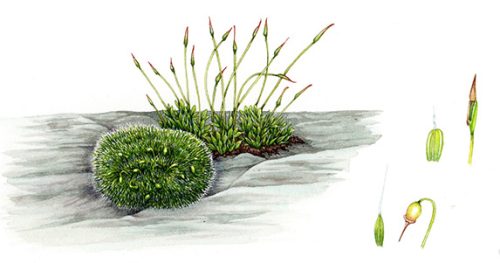
Natural history illustration involves drawing subjects (like mosses!) that you’re not entirely confident about. Recently I completed illustrations of two moss species for The Field Studies Council.
I was lucky enough to find both species growing on my local churchyard wall, but before drawing them I needed to revise my moss anatomy.
Many years ago I did a diagram of moss for The Amateur Naturalist by Nick Baker, so could refer to this.
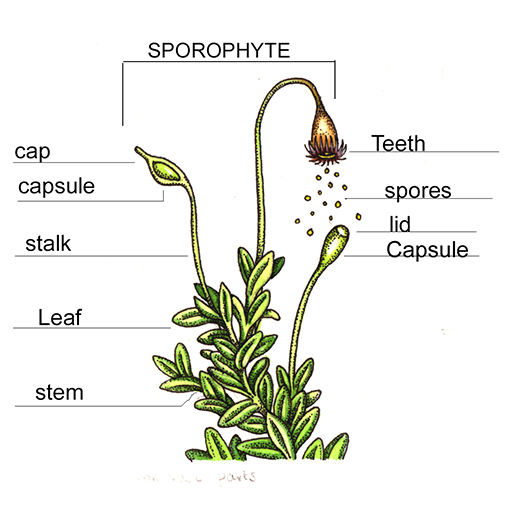
Moss anatomy by Lizzie Harper, from “The Amateur Naturalist” by Nick Baker
Life cycle of Mosses: Gametophyte
Moss has a complex life cycle. It alternates generations between gamete and spore producing structures. From greenish threads, a moss produces simple leaves and stems, attached with root-like rhizoids. These structures are called gametophytes, and produce whorls of chlorophyll-producing leaves from a central stem. The male and female reproductive structures are carried at the tip of gametophyte branches.
The male reproductive structures, (antheridium), produce mobile male gametes (antherozoids). Antherozoids swim through moisture on the moss and fertilize the female organs, (archegonium). At the base of each archegonium, an ovary awaits fertilization. Male gametes are attracted to the top of the structure with chemicals. They swim down and fertilize the ovary.
Life cycle of Mosses: Sporophyte
The fertilized zygote grows from the parent, almost like a parasite. It sends up a slender stalk which bears a spore capsule at its tip. This whole structure is called the sporophyte. The spore capsule ripens, and when mature the cap of the capsule is shed. Under this cap is a lid which splits away. Beneath the lid (hope you’re following this mossy game of pass-the-parcel) is a set of teeth, arranged in a spiral or circular pattern. Humidity alters the movement of these teeth, so when conditions are right they flick out the ripe spores. These go on to germinate and produce a green thread-like mass, from which the new gametophyte grows. Cycle complete.
Time to draw the pencil rough.
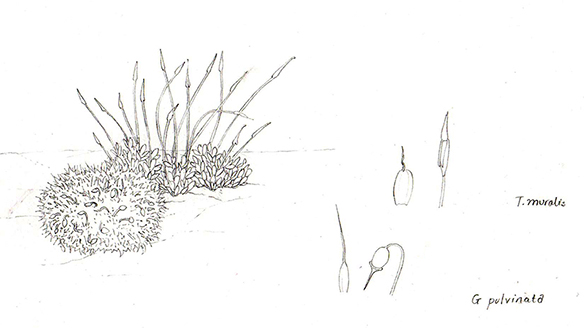
Illustrating Mosses
There were no sporophytes on my specimens, but luckily I had a decent field guide which allowed me to add them. A great book on mosses is “Mosses and Liverworts of Britain and Ireland: A Field Guide” by Atherton, Bosanquet & Lawley
The client approved the rough. I got out my hand lens and smallest paintbrush. It was actually rather wonderful to get lost in the intricacies of the moss structure, painting as well as observing though my 10X lens.
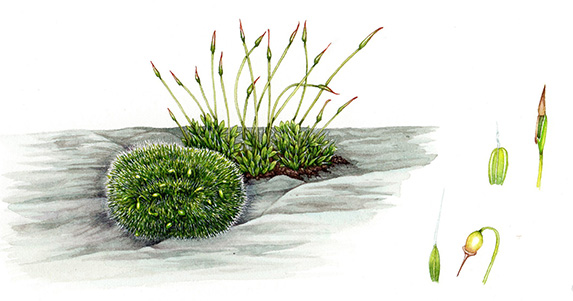
Grimmia pulvinata and Tortula muralis
The finished result is something I’m pleased with. I still have a long way to go before I reach the dizzy Bryological heights of expert moss illustrators like Christina Hart-Davies; but as one new to painting mosses it was a wonderful start.
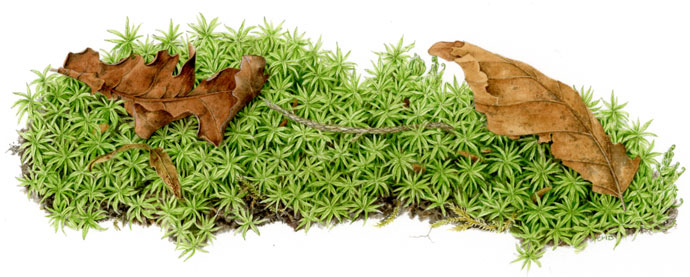
Atrichum undulatum by Christina Hart-Davies
For much more on all things mossy, or bryological; please take a look at the website of the British Bryological Society


Wow, your botanical illustrations of mosses are simply stunning! It’s fascinating to see how artists like you take on the challenge of drawing subjects like mosses, even if you’re not entirely familiar with them. Your dedication to revising moss anatomy before creating these illustrations is truly commendable. It must have been a rewarding experience to find both moss species growing on your local churchyard wall for inspiration. And having a previous diagram of moss from “The Amateur Naturalist” by Nick Baker must have been a helpful resource. Keep up the fantastic work! 🌿🎨
Thank you Treviso
Hi Treviso
Thanks for the support and for the comment. I love the learning that is necessary to my work, it feels great to be able to add to my knowledge (even if I forget it all as soon as Im done drawing a plant or animal!) Thanks you for taking the time to notice, and mosses are AMAZING